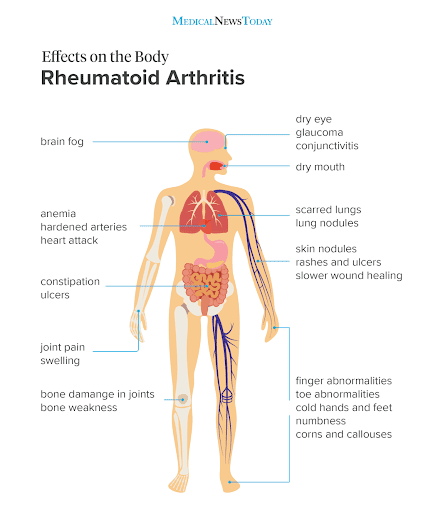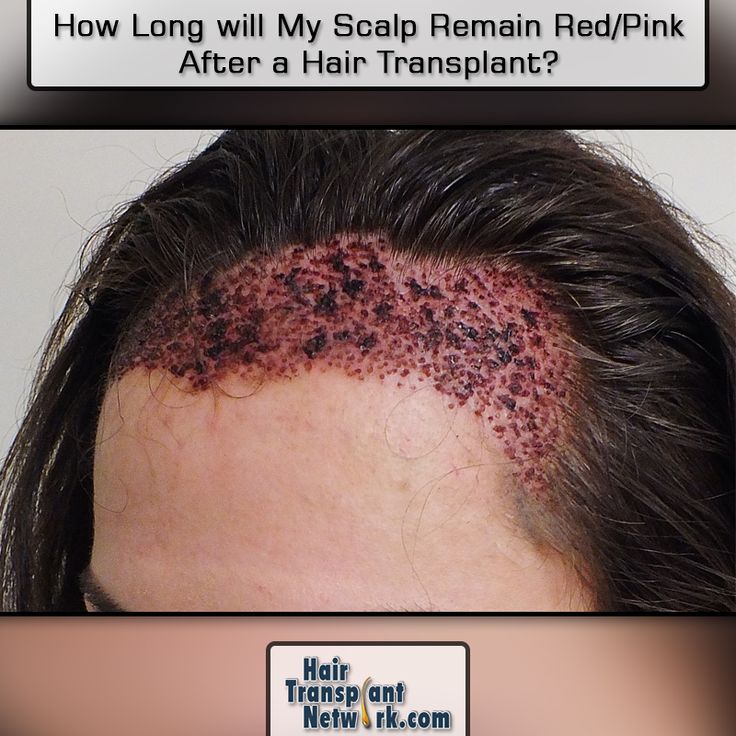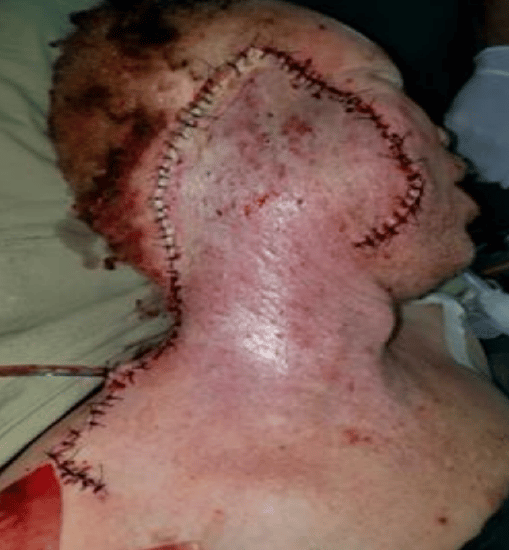How To Prepare For A Skin Graft
Your doctor will likely schedule your skin graft several weeks in advance, so youll have time to plan for the surgery.
You should plan to tell your doctor ahead of time about any prescription or over-the-counter medications youre taking, including vitamins and supplements. Certain medications, such as aspirin, can interfere with the bloods ability to form clots.
Your doctor may ask you to change your dose or stop taking these medications before the surgery.
Additionally, smoking or using tobacco products will impair your ability to heal following a skin graft, so your doctor will likely ask you to stop smoking ahead of your surgery.
Your doctor will also tell you not to eat or drink anything after midnight on the day of the procedure. This is to prevent you from vomiting and choking during the surgery if the anesthesia nauseates you.
You should also plan on bringing a family member or friend who can drive you home after the surgery. General anesthesia may make you drowsy after the procedure, so you shouldnt drive until the effects have fully worn off.
Its also a good idea to have someone stay with you for the first few days after the surgery. You may need help performing certain tasks and getting around the house.
removing skin from the donor site.
Once skin is removed from the donor site, the surgeon will carefully place it over the transplant area and secure it with a surgical dressing, staples, or stitches.
Care Of The Healed Graft And Donor Site
- After the area is healed you must massage and moisturise the graft and the donor site.
- You should do this 3-4 times every day with a non-perfumed Sorbolene cream.
- The sites need moisture replaced regularly.
- If you dont do this the wound may break down and further scarring can occur.
- It is vital to protect both areas from the sun for at least 12 months after surgery.
- Always use 30+ SPF sunscreen, sun protective clothing and a hat
What Is Hyperbaric Oxygen Therapy
Hyperbaric oxygen therapy makes it possible to deliver the concentrated oxygen needed for skin graft healing. Our skin cannot survive without oxygen, and the most effective way to provide skin cells with oxygen is through the blood. Hyperbaric oxygen therapy infuses the bloodstream with 100% concentrated oxygen.
Using a special hyperbaric chamber, HBOT helps oxygen dissolve directly into all of the bodys fluids so that it can thoroughly permeate areas where circulation has become reduced or blocked. This essential benefit of hyperbaric wound care stimulates and supports the bodys own healing process. When white blood cells receive enough oxygen, they can effectively kill bacteria, reduce swelling, and allow the rapid reproduction of new blood vessels.
Recommended Reading: What Does Skin Cancer Do To You
What Happens During Skin Graft Surgery
You will have skin graft surgery in a hospital. Usually, your surgery is done under general anesthesia , although smaller grafts can be done with local anesthesia. The surgeon will make incisions and remove healthy skin from the donor site. Depending on the technique your provider uses, they may remove healthy skin from the:
- Inner thigh, outer thigh or hip.
Before transplanting the healthy skin, your provider may poke little holes in it or make several tiny crisscrossed cuts. Providers call this technique meshing. The healthy skin may look like a fishnet. This technique allows your provider to stretch the skin over a larger area. It also helps the area heal after surgery.
Your provider places the healthy skin over the damaged or missing skin. They secure the skin in place with stitches or staples and put a dressing over the area. The donor site and graft site will heal after surgery. But it will probably take more time for the graft site to heal.
Caring For The Bandaged Graft Site

-
Do not touch the bandage. Leave it in place until you are told to remove or change it.
-
Keep the bandage dry. Take a sponge bath to avoid getting your bandage wet, unless your healthcare provider tells you otherwise. Ask your provider about the best way to keep your bandage dry when bathing or showering. Ask your provider what to do if your bandage gets wet.
-
Keep the bandaged area clean. Avoid getting dirt or sweat on it.
-
If the bandage comes off or is damaged or very dirty, call your healthcare provider.
-
If the tube on your vacuum bandage comes off, call your healthcare provider.
-
As often as possible, elevate the graft site above the level of your heart. Do this when sitting or lying down. This helps reduce swelling and fluid buildup in the graft area.
-
Keep the part of the body with the graft as still as possible. Avoid any movement that stretches or pulls the skin graft.
-
If the graft bleeds, apply gentle but firm pressure to the graft site with a clean cloth or bandage for 10 minutes.
Don’t Miss: How To Recognize Basal Cell Carcinoma
Are There Any Risks
The risks will be explained by the surgeon when they ask you to sign the consent form for the operation. These include bleeding , infection and partial or complete loss of graft. Re-grafting may be required if some or all the graft is lost. Please ask your doctor or nurse if you would like further information about any of these points.
How Do I Stop My Scars From Widening
Loffredo recommends the following to help you minimize scarring after incisions have healed shut:
Can scar tissue become cancerous?
The scar tissue carcinoma is a rare disease which arises from the floor of unstable scars, chronic fistulae, ulcera and radiation injuries.
Read Also: Does Skin Cancer Ever Itch
What Percentage Of Skin Grafts Are Successful
The success take rate for split-thickness grafts is 95% Full-thickness graft: has all skin layers This also has a success rate of 95%.
Hemostasis is especially important in blood-rich regions such as the scalp, face, and hand In such cases, drainage holes which are also useful for the drainage of bacteria and exudates should be made on the skin grafts.
Does The Skin Graft Always Take
Sometimes the skin graft does not survive the transfer to the new site. This usually happens within the first two weeks after the procedure. It can happen for a variety of reasons including the accumulation of blood or fluid underneath the graft, and/or wound infection. If this happens, your dermatologist will inform you what further treatment is required – a repeat skin graft procedure may be required or the wound may be dressed regularly and left to slowly heal on its own. It is quite normal for the graft to appear dark and crusted on the surface when the dressings are removed early on. This does not necessarily mean it has failed.
Recommended Reading: What Is Melanoma In Nails
How Is A Skin Graft Procedure Done
Your plastic surgeon will choose the type of skin graft and the donor site . Donor sites are usually places that are easily concealed, like the thigh or scalp. Surgeons may also take skin from the buttocks, back, and arm.
The wound site is thoroughly prepared. This includes removing any damaged skin in the area a process called debridement and ensuring that the area is sufficiently free of bacteria. If necessary, the area will be treated with antibiotics. This process is particularly important as improper wound preparation can lead to hematoma and wound infection, two common causes of skin graft failure. Finally, the area is cleaned using saline, and any bleeding is stopped.
Healthy skin is typically harvested using a dermatome, a handheld device that strips away an even layer of skin for later application. Smaller areas that need a more refined touch may be harvested by hand or by a drum dermatome.
After the skin is removed, the donor site is dressed and treated according to whether it was a split or full thickness graft. Full thickness graft donor sites will be sutured closed. Split-thickness skin graft donor sites will be dressed and left to heal via reepithelialization .
Answer: Still Amazed Byvillar
A thick split thickness skin-graft contracts better than a full thickness skin graft. The graft is sutured with a running suture biting the deep skin edge to hold the graft down on the bottom of the wound. A small puncture is made in the graft to allow drainage. The graft is now in a deep hole. A cotton ball the size of the hole is soaked in clindamycin/gentamycin solution and pushed into the hole over a small patch of xeroform gauze to keep the graft down. The nose is wiped clear of oils and a steri-strip is glued over the cotton stent. At first the graft is depressed. Then, over a few weeks and months it contracts and the hole fills. For some unknown reason, the wound levels off flat with the surrounding tissue in most cases. This is not the case in other parts of the face and body. The nose is special. We have high success with this technique and every time it happens I am still amazed after 30 years of using this technique. Best wishes. Knowledge is power. Luis F. Villar MD FACS
You May Like: Do I Have Skin Cancer
What Is The Cost Of Skin Grafting
Skin grafts are of three typesCostCity Average Price Price Range Hyderabad Rs 77667 Rs 30000 250000Kolkata Rs 81939 Rs 13747 150000Mumbai Rs 96579 Rs 35000 250000New Delhi Rs 92936 Rs 25000 2500003 more rows
Several factors may cause skin graft failure The most common complication is hematoma Other complications include infection, mechanical shearing forces, inadequate recipient bed vascularity, seroma, poor selection of skin graft location and technical error.
What To Expect After A Skin Graft

A person who had a general anesthetic can feel drowsy after the procedure. They may stay a few days in the hospital as doctors monitor their vital signs, give medications, and ensure proper healing of the persons wounds.
Is it painful?
Once the anesthetic wears off after several hours, a person may feel pain and tenderness in the wound. Nurses will give medications to address the pain and inflammation and prevent infection.
Results
If no complications occur, successful skin grafting will result in a closure of wounds that can be cosmetically pleasing.
Recommended Reading: Does Roundup Cause Skin Cancer
Does A Skin Graft Scab Over
Each day the graft will continue to lighten and become flesh-colored, usually within a month If a scab forms over the graft, this could mean that the graft has not taken If there is yellow material stuck on the graft, or if the graft appears bright red, this could signify that the graft has not taken.
Bleeding Graft failure Infection at either the donor or recipient site Poor healing.
What Is The Recovery Time For A Skin Graft
Your initial dressing will be left on for three days to a week, barring any signs of complication. During this time, the grafted skin will begin to heal to your existing skin and take to your body. The treated site goes through the process of accepting this new skin over a series of steps:
- Fibrin Adhesion A thin fibrous network adheres the graft to the surrounding skin. This temporarily holds it in place as the graft heals.
- Plasmatic imbibition The wound bed beneath the new skin will send nutrients up toward the new skin, nourishing it. This lasts for a day or two. It keeps the skin from drying out as it takes to your body.
- Capillary growth and inosculation This is known collectively as revascularization. Basically, your capillaries will grow, making the new skin one with the rest of your body. In just shy of a week after the surgical procedure, you should have blood flow established between the new skin and your body.
While all of this is going on, you may also have a donor site going through its own healing process. If your autograft was split-thickness, then the donor site is undergoing reepithelialization. There are hair follicles and glands left behind in the remainder of the dermis. Epithelial cells from these components spread across the wound and begin to rebuild the skin. This takes roughly seven to ten days.
Read Also: What Do The Early Stages Of Skin Cancer Look Like
When Should I See My Healthcare Provider About Skin Graft Surgery
- Bleeding or pus that drains from the incisions.
- Severe pain or pain that doesnt get better with medications.
- Signs of infection, such as fever.
Children who have skin graft surgery may need another procedure as they grow. Sometimes, the transplanted skin doesnt grow and stretch along with the childs skin. If your child has a skin graft, ask your provider about the need for future surgeries.
A note from Cleveland Clinic
Healthcare providers use skin grafting to help large wounds heal, replace lost skin and improve the appearance of damaged skin. Most skin graft surgeries are successful. But sometimes the donor skin doesnt take to the graft site. If that happens, you may require another skin graft. To lower your risk of complications, follow your providers post-surgery instructions carefully. Before surgery, tell your provider about any medications youre taking. If you smoke, talk to your provider about quitting smoking before surgery.
What Is A Skin Graft What Does It Correct
Since 2004, Tru-Skin Dermatology has provided premier skin graft procedures throughout the Central Texas area. A skin graft is a patch of skin that is surgically removed from one area of the body, usually referred to as the donor site, and transplanted to another area where the skin is damaged or lost. Tru-Skin Dermatology offers full-thickness and Revita® skin grafts for clients with severe burns, infections, or wounds, as well as those who have had skin removed because of skin cancer. Skin grafts cover up wounds and facilitate a faster healing process.
You May Like: Skin Changes Breast Cancer Symptoms
What Is The First Stage Of Healing In A Skin Graft
The initial stage of graft healing, termed plasmatic imbibition, occurs within the first 24-48 hours after the placement of the graft on the recipient bed During this process, the donor tissues receive their nutrition through the absorption of plasma from the recipient wound bed via capillary action.
Sometimes the skin graft does not survive the transfer to the new site This usually happens within the first two weeks after the procedure It can happen for a variety of reasons including the accumulation of blood or fluid underneath the graft, and/or wound infection.
How Long Does It Take A Skin Graft To Attach
Your skin will likely have a purple or red hue to it initially after the surgery After about 5 to 7 days , the graft should start to connect with the surrounding tissue Your doctor or surgeon will check for signs of this and that the site has healed After about 2 to 3 weeks, your donor site should heal.
The dressing over the skin graft must be left on until your first appointment in clinic, usually 5-7 days after the operation The dressing over the donor site wound is normally left on for 10-14 days but may be checked earlier in clinic.
Read Also: Do Kids Get Skin Cancer
Healing Stages And Time
A person can expect swelling in the first 24 hours as the graft absorbs excess fluid. Blood supply connections will grow 4872 hours after the procedure. It will have a restoration of blood supply within 47 days.
While sensation may return at around 24 weeks after the surgery, full recovery can take several months to years.
Additional Skin Graft Aftercare Instructions

- Dont remove the bandages on your skin graft or donor site until your doctor instructs you to.
- Keep the area around the skin graft clean and dry.
- Take any pain medication prescriptions exactly as directed.
- Talk to your doctor about when you can safely return to work, start driving again, and exercise.
- Keep all of your follow-up appointments to ensure proper skin graft healing.
Recommended Reading: Is Carcinoma In Situ Cancer
What Can Help The Wounds Heal
It is important that the care instructions given by the surgeons and nurses are followed, to give the graft a good chance of healing. A healthy balanced diet that includes plenty of protein is important. Protein foods include: milk, cheese, yoghurts, eggs, meat, fish. Smoking and passive smoking slows down the healing by reducing the amount of oxygen reaching the skin.
What Are The Risks Or Complications Of Skin Graft Surgery
Most skin grafts are successful. But sometimes the transplanted skin doesnt take to the new area. If the transplanted skin doesnt take, you may need another skin graft. An unsuccessful skin graft usually results from:
- Blood or pus pooling underneath the transplanted skin.
- Injury or damage to the graft site .
- Problems with blood circulation that cause the wound to heal too slowly .
Other complications of skin graft surgery include:
- Contracture, when the grafted skin shrinks and pulls in at the edges.
- Discolored, patchy or uneven skin.
- Loss of skin sensation or increased sensitivity to pain.
- Pain that lasts after the area has healed .
- Scar tissue building up around the graft site.
Also Check: Light Foundation For Mature Skin